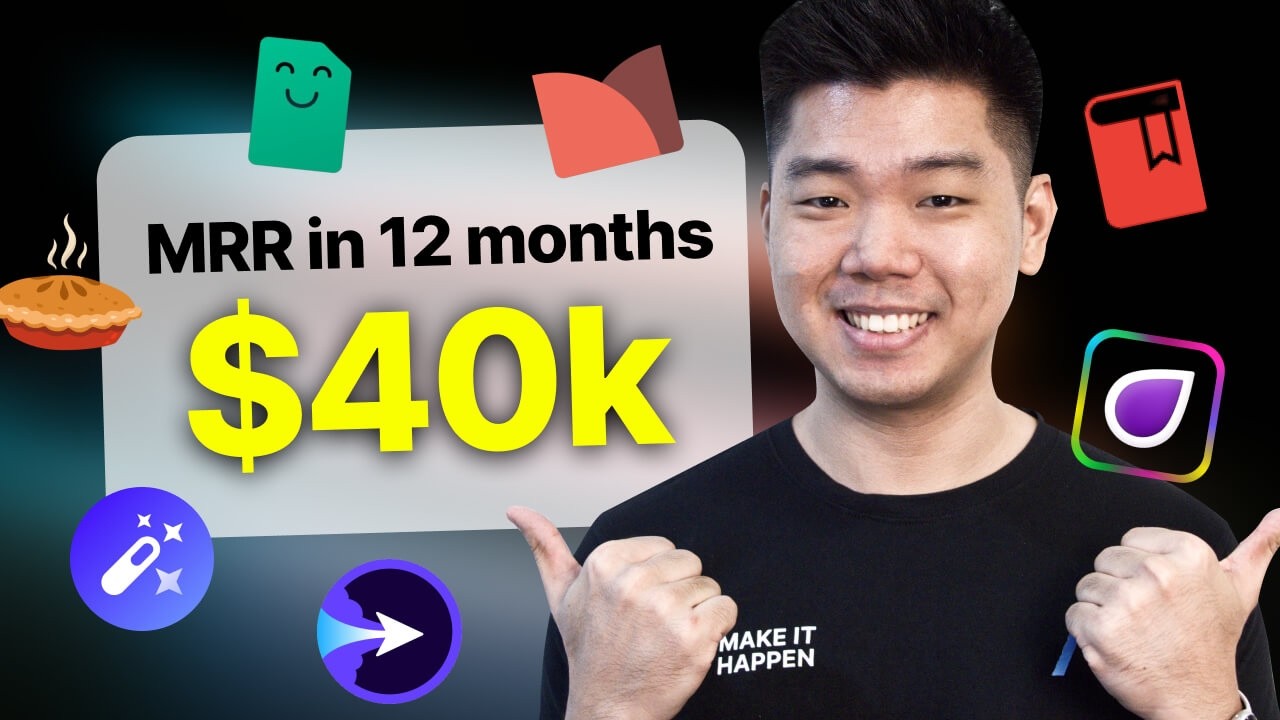My 11 Step Software Building Process
Summary
TLDRThis video script outlines a comprehensive 11-step process for building a successful SaaS application. Starting with self-assessment and idea generation, it covers validation, design, backend and frontend development, deployment, and marketing. The speaker emphasizes the importance of iteration based on user feedback and highlights the significance of repeating and refining the process to achieve success in the competitive SaaS landscape.
Takeaways
- 🚀 The process of building a SaaS application is long and involves many steps, with the 11th step being the most crucial.
- 🤔 Before starting, it's essential to question if building a SaaS is the right path, considering the commitment required for success.
- 💡 Idea generation for a SaaS can stem from personal life inefficiencies or identifying problems for business owners to solve.
- 🔍 Idea validation is key and can involve reaching out to potential users and presenting an MVP or landing page to gauge interest.
- 🎨 Designing the UX/UI involves creating wireframes and mockups, which can be done in tools like Figma or outsourced to professionals.
- 🗃 Database design is the next step, where the data requirements for the application are determined and modeled.
- 💻 Building the backend should come first, as it lays the foundation for the frontend development by establishing necessary APIs.
- 🖥️ Frontend development follows backend, where the user interface is built based on the previously designed mocks and wireframes.
- 🌐 Deployment and hosting are important steps, often involving cloud services like AWS, and can impact the development timeline.
- 📢 Marketing is a continuous process that should be considered from the early stages, not just as a final step.
- ♻️ Iteration is inevitable; user feedback will drive necessary updates, bug fixes, and feature enhancements post-launch.
- 🔁 The most important part of the SaaS journey is the ability to repeat and refine the process, learning from each project to improve the next.
Q & A
What is the speaker's current status in building their SaaS application?
-The speaker is about 1 to 2 months into the process of building their SaaS application, which they describe as a long process with many moving parts.
What does the speaker consider the most important part of the SaaS building process?
-The speaker considers the 11th part of the process, which is to repeat the process, as the most important one, emphasizing the need for perseverance and continuous refinement.
What is the first step the speaker suggests for someone considering building a SaaS application?
-The first step is to ask oneself if building a SaaS application is the right avenue to take, considering the long-term commitment and effort required.
How does the speaker come up with ideas for their SaaS application?
-The speaker's ideas come from various sources, including day-to-day life inefficiencies and B2B opportunities to solve business owners' problems in any niche.
What is the importance of validating an idea before building a SaaS application?
-Validating an idea is crucial to avoid potential pitfalls later in the process, ensuring there is a market and interest before investing significant time and resources.
What role does the speaker see for design in the SaaS building process?
-Design plays a significant role, including UX/UI design using tools like Figma, and database or data store design to model the necessary data for the application.
Why does the speaker prefer to build the backend before the frontend?
-The speaker finds it easier to build the frontend after having all the APIs ready from the backend, which allows for a more seamless integration process.
What is the speaker's approach to deployment and hosting of the SaaS application?
-The speaker prefers to host after the application is built to save costs, using platforms like AWS, with Docker containers for backend and frontend services, and databases on RDS.
How does the speaker plan to approach marketing for their SaaS application?
-The speaker intends to explore various marketing strategies, including social media videos and community engagement, and will be thinking about marketing from early stages of the process.
What does the speaker suggest for handling user feedback after launching the SaaS application?
-The speaker suggests being prepared to iterate based on user feedback, addressing both constructive criticism and feature requests to maintain and improve the application.
What is the speaker's perspective on the importance of repeating the SaaS building process?
-The speaker believes that repeating the process and refining it over time is key to success, as it builds experience and increases the chances of creating a successful application.
Outlines

Cette section est réservée aux utilisateurs payants. Améliorez votre compte pour accéder à cette section.
Améliorer maintenantMindmap

Cette section est réservée aux utilisateurs payants. Améliorez votre compte pour accéder à cette section.
Améliorer maintenantKeywords

Cette section est réservée aux utilisateurs payants. Améliorez votre compte pour accéder à cette section.
Améliorer maintenantHighlights

Cette section est réservée aux utilisateurs payants. Améliorez votre compte pour accéder à cette section.
Améliorer maintenantTranscripts

Cette section est réservée aux utilisateurs payants. Améliorez votre compte pour accéder à cette section.
Améliorer maintenantVoir Plus de Vidéos Connexes

How to Start a SaaS Business With $0 [Simple 7 Steps]

SaaS Sales Funnel - 5 Strategies To Selling SaaS (Software as a Service)

Build a $1M SAAS Software Company in 2025 (COPY THESE 4 STEPS)

8 Best Lead Generation Tactics for Software/SaaS companies

How To Self Study AI FAST

11 Micro SaaS Ideas GUARANTEED To Make Bank ($500 - 40K/mo)
5.0 / 5 (0 votes)
